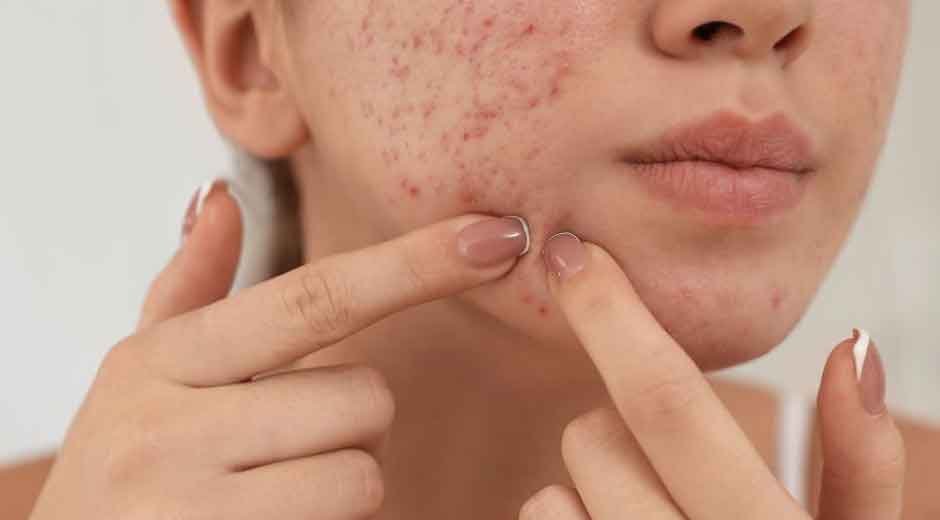Acne is one of the most common skin conditions in the world, yet it’s surrounded by myths, half-truths, and outdated advice. From old wives’ tales about chocolate to modern-day TikTok skincare hacks, it can be hard to separate fact from fiction. If you’ve been wondering why acne keeps showing up uninvited, it’s time to break out the truth and explore the real causes behind those frustrating blemishes.
Table of Contents
1. Hormonal Fluctuations – The Invisible Trigger
Hormones are one of the biggest culprits in acne development. Androgens—hormones that increase during puberty—stimulate the sebaceous (oil) glands in the skin. This excess oil, or sebum, mixes with dead skin cells and clogs pores, creating the perfect environment for acne-causing bacteria.
It’s not just teenagers who suffer from hormone-related acne. Many adults experience flare-ups during menstrual cycles, pregnancy, menopause, or due to conditions like polycystic ovary syndrome (PCOS). In these cases, hormonal imbalance drives breakouts even in people who otherwise take good care of their skin.
Tip: If you suspect your acne is hormonal, keeping a breakout diary can help you identify patterns and discuss treatment options with a dermatologist.
2. Excess Sebum and Clogged Pores – The Foundation of Breakouts
No matter what triggers it, acne almost always starts with clogged pores. Your skin naturally sheds dead cells, but sometimes these cells don’t shed properly and instead mix with oil. This sticky combination plugs the pore, trapping bacteria and leading to inflammation.
Clogged pores can be caused by several factors, including:
- Overproduction of oil due to genetics or hormones
- Using heavy or pore-clogging cosmetics (“comedogenic” products)
- Not cleansing thoroughly after sweating or wearing makeup
Tip: A gentle, consistent skincare routine with non-comedogenic products helps keep pores clear without stripping the skin of its natural moisture.
3. Bacteria – The Breakout Accelerator
Acne isn’t caused by dirt, but bacteria do play a role. Cutibacterium acnes (formerly known as Propionibacterium acnes) is a naturally occurring skin bacterium. When pores are blocked, this bacterium thrives in the oxygen-poor environment, producing substances that irritate skin and cause redness, swelling, and pus-filled pimples.
Tip: Over-cleansing won’t kill acne bacteria, but targeted treatments containing benzoyl peroxide or prescription antibiotics can help reduce bacterial overgrowth.
4. Diet – The Controversial Connection
For years, dermatologists dismissed diet as a major factor in acne. However, recent studies suggest that certain foods may contribute to flare-ups in some people. High-glycemic foods (such as white bread, sugary snacks, and soft drinks) can cause rapid spikes in blood sugar, triggering hormonal changes that increase oil production. Dairy—especially skim milk—has also been linked to acne in some research.
This doesn’t mean you have to give up your favorite treats forever, but paying attention to your skin’s reaction to certain foods can be helpful.
Tip: Keep a food journal to see if your acne worsens after consuming specific items.
5. Stress – The Silent Skin Saboteur
Stress doesn’t directly cause acne, but it can make it worse. When you’re stressed, your body produces more cortisol, a hormone that can increase oil production and inflammation. This explains why breakouts often appear right before a big exam, work presentation, or important event.
Tip: Incorporating stress-reducing habits—like exercise, meditation, or even short breathing exercises—can help keep both your mind and skin calmer.
6. Skincare and Cosmetic Habits – The Unseen Offenders
Sometimes, your skincare and makeup routine could be making acne worse. Over-washing, using harsh scrubs, or applying too many products at once can irritate skin and strip away its natural barrier, causing it to produce more oil in response. Likewise, not cleaning makeup brushes or sleeping with makeup on can introduce bacteria and dirt into pores.
Tip: Keep your routine simple and consistent, and always remove makeup before bed.
7. Genetics – The Unchangeable Factor
Acne, like many other health conditions, often has a genetic link. If your parents struggled with persistent breakouts, your chances of experiencing them may be higher. Genetics can determine how much oil your skin produces, how quickly your skin cells renew, and how your immune system reacts to acne-causing bacteria—all of which play a role in flare-ups.
While you can’t alter your DNA, you can take control of your skin’s health. With the right professional care and a tailored treatment plan, you can effectively treat acne in Salt Lake City and keep breakouts under control.
Final Thoughts: Treating Acne at the Source
Acne is rarely caused by just one factor—it’s often the result of a combination of hormonal changes, excess oil, bacteria, genetics, and lifestyle habits. Understanding the underlying causes is the first step toward finding a treatment that works for you.
Whether you’re dealing with occasional pimples or more persistent acne, remember that it’s not a sign of poor hygiene or a personal failing—it’s a complex skin condition that can be managed with patience, the right products, and professional guidance.
Your skin tells a story, but acne doesn’t have to be the main plot. With knowledge, care, and consistency, you can turn the page toward clearer, healthier skin.
